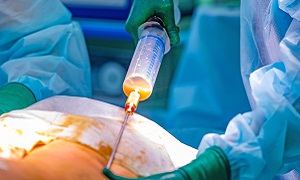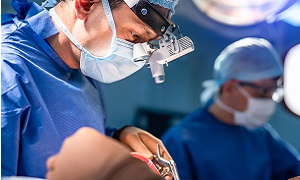Gynecomastia Surgery
Gynecomastia surgery is a treatment for reducing breast size in men. Sometimes when a man’s breast grows overly large due to a condition known as gynecomastia, it might lead to embarrassment.
Gynecomastia is a condition caused by adolescent hormonal imbalance. Sometimes men can develop enlarged breasts due to certain medications as well. It is estimated that in the US alone, over 50 percent of men experience a level of gynecomastia in their lifetime.
Gynecomastia surgery can be performed using various methods which can include liposuction, cutting out any excess glandular tissue or sometimes a combination of liposuction and excision.
Purpose
Though losing weight can help in reducing male breasts for some men, sometimes due to excess glandular tissue, the enlarged breasts may still remain.
People who are self-conscious or uncomfortable about the size of their chest or people who find themselves avoiding certain activities because they are afraid of showing their chest, are generally candidates for this procedure. With a qualified cosmetic surgeon, a gynecomastia surgery usually gives effective results.
Most patients, after undergoing the treatment, claim that for the first time in years, they feel comfortable going shirtless and also experience a boost in their self-confidence.
Preparation
Gynecomastia surgery is one of the few straightforward cosmetic surgeries. However, if you are looking for the best results, it is important to look for a skilled cosmetic surgeon. Make sure your surgeon performs this procedure regularly, and ask him for pictures of previous patients, to make sure that you are satisfied with the results.
Few days before the procedure, you might be required to stop taking certain medications. Make sure you discuss this with your surgeon. You also need to quit smoking at least four weeks prior to your surgery.
Gynecomastia surgery is generally performed on an outpatient basis. It is best if you can make sure that a responsible adult is available for driving you to and from surgery. Also, see if you can arrange someone to stay with you round-the-clock for at least twenty four hours after your surgery. If you are unable to find a person, let your surgeon know in advance so that arrangements can be made at an after-care facility or at a hospital.
Procedure
First, you will receive general or regional anesthesia. If regional anesthesia is used, you will be awake, while your surgery area will feel numb. If general anesthesia is used, then you will remain unconscious during the entire procedure.
Two common techniques are generally used for gynecomastia surgery:
Liposuction technique
Liposuction technique is best for cases where gynecomastia is caused by excess fatty tissues. In this method, first, the surgeon makes a few small incisions. Then a thin hollow tube known as a cannula, is inserted.
Next, the cannula is moved back and forth. This works to loosen the excess fat, which can be then removed from the body with the help of vacuum suction.
Although there are various liposuction methods that are used, your doctor will decide which one is the most appropriate technique for your condition.
Excision technique
If glandular tissue or excess skin needs to be removed for correcting gynecomastia, then the excision technique might be used. If the nipple needs to be repositioned or the areola needs to be reduced, then this technique becomes necessary. Incision patterns can vary depending on surgical preference and on the condition.
First, your surgeon makes a semicircular incision in the areola, i.e. the skin surrounding the nipple, so that the tissue can be removed leaving as less scar as possible. If he/she can see that excess skin needs removal and tightening, your surgeon will need to make additional incisions. The incisions will be closed once the procedure is complete.
After the procedure
After gynecomastia surgery, you will likely see an immediate improvement in the shape as well as the appearance of your chest. Your surgeon might prescribe some pain medication, as well. You might also be given a compression garment to wear. This will help to enhance your comfort and help your chest heal optimally.
While the healing process for every patient is unique, most patients are generally ready to return to work just a few days after the procedure. Some men might experience a loss of sensation in the treated areas after the procedure, though this is generally temporary. Over the months, following your procedure, any loss of sensation should return gradually.
How long it takes you to recover generally depends on how severe your condition was and the method used. An average patient, who was treated with a combination of liposuction and breast gland tissue, may be able to resume work after one week to ten days. It is important for you to follow the instructions provided by your surgeon regarding patient care. You will also receive detailed instructions about the normal symptoms you will experience as well as any potential signs of complications. It is noteworthy that the amount of recovery time required varies among individuals.
You may need your first follow-up visit with your doctor around seven days after the procedure. During this time, the sutures will be removed, along with your drain, if the discharge has diminished or disappeared.
Your surgeon will assess how long you need to wear the compression dressing and when you can resume physical exercise. He/she might ask you to avoid direct exposure to sunlight for around six weeks until the bruising and the swelling subside.
It is important to be patient, as it might take at least three months before the swelling subsides and you are able to see the final results. Although the results of this procedure are permanent, you need to be careful regarding your weight and keep it stable. If your condition was caused by medication or any kind of steroid, further use can cause your gynecomastia to reoccur.
Risks
Like all surgical procedures, gynecomastia surgery also possesses a certain degree of risk. Some of the potential complications include:
- Adverse reaction to the anesthesia
- Infection and bleeding
- Hematoma or seroma, i.e. an accumulation of blood or fluid under the skin that can require removal
- Allergic reactions
- Changes in skin sensation
- Scarring
- Damage to underlying structures
It is important to follow the advice of your surgeon before and after the procedure, so that risks can be minimized.


